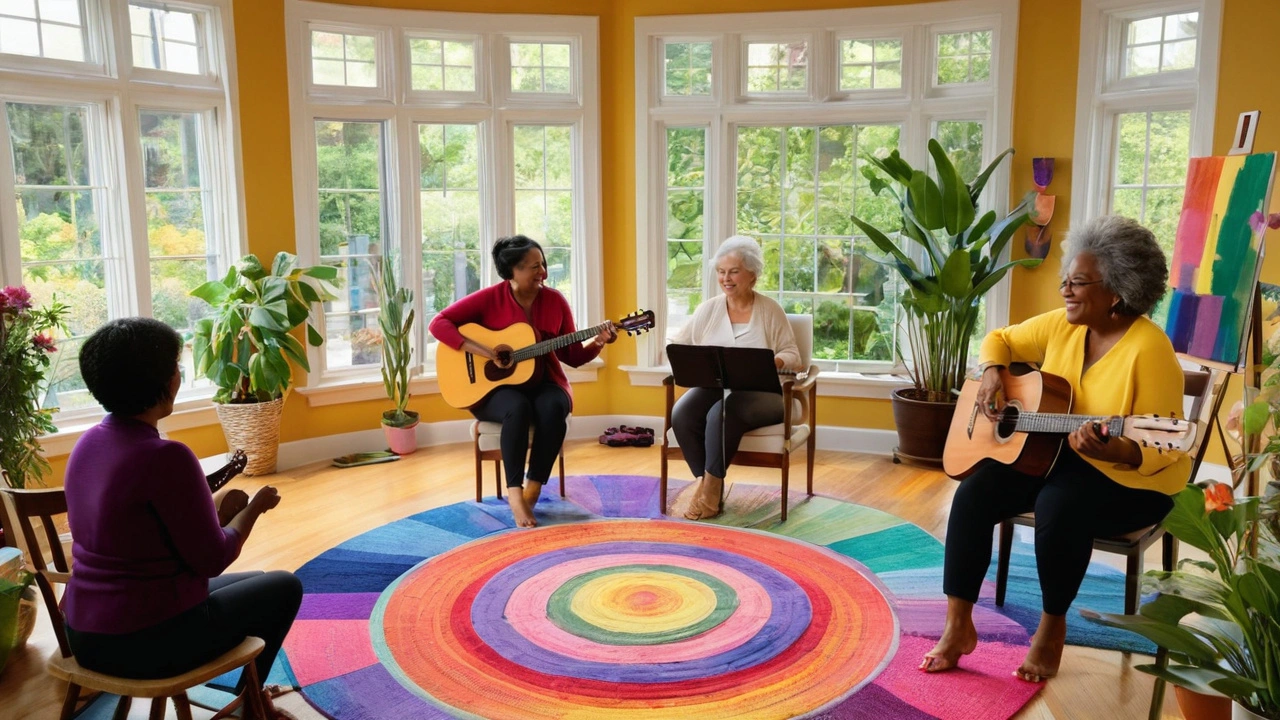Music Therapy: Use Sound to Heal and Feel Better
Music therapy uses music and sound to improve mood, reduce stress, and boost focus. Trained therapists choose songs, instruments, and activities to match your needs. Sessions can be active—playing or singing—or receptive—listening and reflecting. People use music therapy for anxiety, depression, pain control, dementia care, and to support learning. It’s flexible: you can try it in clinics, schools, hospitals, or at home.
How music therapy helps
Sound affects the brain fast. Rhythms can slow your heart rate and calm breathing. Melodies trigger memory and emotion, which is why a song can change your mood in minutes. Therapists guide sessions to strengthen coping skills, reduce pain perception, and improve communication. For kids with learning differences, music can boost attention and memory through repetition and rhythm. For older adults with dementia, familiar songs often reconnect them to past memories and reduce agitation.
Music therapy often pairs well with other approaches. Combine it with breathing exercises to deepen relaxation. Use it alongside mindfulness practices to anchor attention. Some clinics add biofeedback so you can see real-time heart rate changes while listening. These combos make benefits clearer and faster.
What to expect and how to start
First session usually begins with a quick chat about goals and musical tastes. A therapist may ask about your health, routines, and what you want to change. Then they’ll offer a simple activity—listening to a track, playing a drum, or singing along. Sessions are practical: you’ll leave with easy tools to use between appointments, like playlists or breathing cues timed to music.
You don’t need perfect pitch or to be a musician. Therapists adapt activities to fit your skill level. Kids might move to a beat or play simple percussion. Adults might write lyrics to process feelings. Therapists measure progress by mood changes, sleep, pain reports, or improved focus, not technical music ability.
Want to try music therapy at home? Start with these steps: pick songs that change your mood—one upbeat, one calm. Use rhythm for focus: set a playlist for work blocks and include short breaks with slower music. For relaxation, follow a slow song with deep breaths each time the chorus begins. Record your mood before and after a listening session to see what works.
Find a credentialed music therapist via local hospitals or national associations. If cost or access is an issue, many community centers and schools offer group sessions. Online options and guided playlists created by therapists can be a budget-friendly start. Trust your reactions: if a song brings relief, it’s working.
People of all ages benefit from music therapy, from kids learning language to seniors easing loneliness. For chronic pain patients, music can shift attention away from pain and lower medication needs when used alongside medical care. Athletes use music to improve motivation and rhythm for training. If a song triggers strong negative memories, tell your therapist—session pace changes to keep you safe. Small, steady steps often bring the best results. Start with curiosity.

Experience the Healing Power of Creative Arts Therapies
Creative arts therapies use painting, music, movement, and drama to help people express emotions that words can't capture. Proven to reduce anxiety, trauma, and depression, they’re accessible to everyone-no talent required.
Read More
How Creative Arts Therapies Help Build Emotional Growth
Creative arts therapies use art, music, movement, and writing to help people process emotions when words aren't enough. Learn how these evidence-based approaches build emotional growth for kids, adults, and trauma survivors.
Read More
Creative Arts Therapies for Emotional Resilience: How Art, Music, and Movement Help You Bounce Back
Practical guide to creative arts therapies for emotional resilience. What it is, how it works, evidence, steps to start, real examples, checklists, and FAQs.
Read More
Why Creative Arts Therapies Matter for Holistic Health: Evidence, Benefits, and How to Start
Research-backed guide on why creative arts therapies support holistic health, with steps to start, examples, evidence, checklists, and FAQs.
Read More
Creative Arts Therapies: The Future of Mental Health Treatment
Creative arts therapies are changing how we help people with mental health challenges. Instead of just talk therapy or medication, art, music, dance, and drama are being used to unlock feelings and boost healing. This article looks at why these therapies work, who they help, and what the future holds. Discover how creative expression is becoming a key part of mental wellness for kids and adults. Get tips for trying out creative therapy—whether on your own or with a pro.
Read More
Creative Arts Therapies: Comprehensive Guide 2024
Discover the transformative power of creative arts therapies in addressing mental health issues and fostering overall well-being. This guide explores various forms of therapy, including art, music, dance, and drama, and provides valuable insights on their benefits. Learn practical tips on choosing the right therapeutic approach to suit individual needs. Dive into real-life examples and success stories that illustrate the effectiveness of these innovative techniques.
Read More